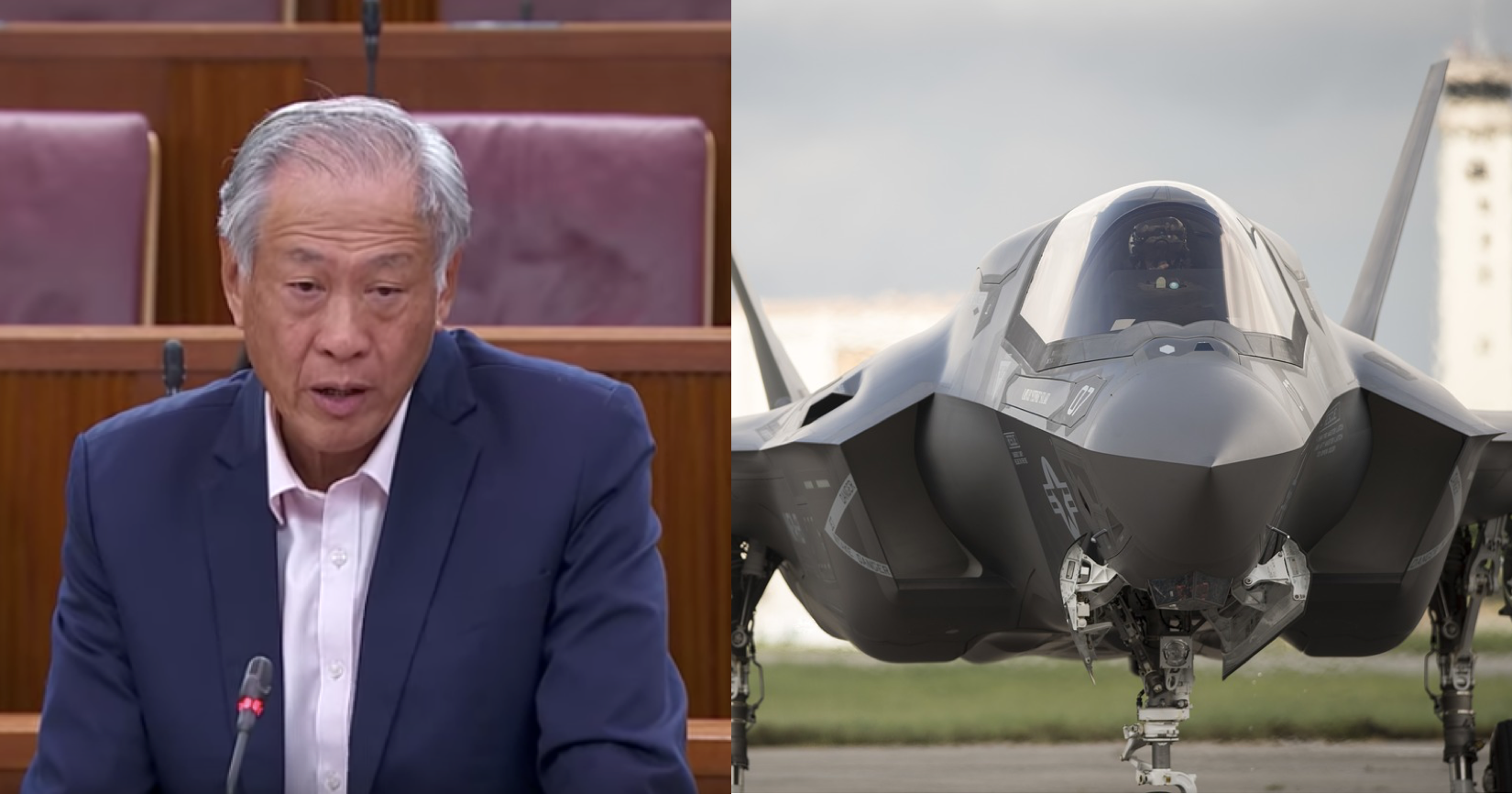Defence Minister Ng Eng Hen sounded a note of warning that Singapore could not afford to ignore changing global circumstances and how this affected our defence capabilities.
To keep up with the times, the Singapore Armed Forces (SAF) needs to undergo restructuring that will better enable them to contend with new threats.
Post World War II era is no longer certain
Ng describes the current geopolitical situation that the SAF currently operates in as "messier, less predictable". Said Ng:
"The post-World War II era of 70 years, championed and spearheaded by a hyper-dominant US together with its Western liberal allies is no longer the only and main narrative."
The rise of China has impacted strategic decisions around the world, such as the UK allowing Huawei to play a role in its 5G network, over the objection of its "Special Relationship" partner, the U.S.
Ng noted that French President Emmanuel Macron had stated publicly the need to rethink "fundamental diplomatic and military strategy" given recent U.S. decisions.
Although Europe is far away from Singapore, what happens there affects us too.
From the Middle East to Asia
The U.S. has maintained a military presence in the Middle East for the past few decades, among other things, to protect shipping lanes to allow the unimpeded flow of crude oil to the rest of the world.
Singapore has benefited from this.
However, for the first time in nearly 70 years, the U.S. is expected to become a net energy exporter in 2020.
And the U.S. is in the process of moving troops out of the Middle East to its bases in Korea, Japan and Australia.
Meanwhile, the Chinese are developing "blue-water" capabilities for its navy and modernising the People's Liberation Army (PLA).
Defence spending in Asia itself has shot up, with ASEAN member states in particular doubling defence spending in the past 15 years.
All this, Ng said, has contributed to the "Asia arena" becoming more militarised and contested. He added:
"We have no desire to take sides or to be caught in the crossfire. We stand for our national interest, and so far, we have maintained independence and space for ourselves, but as contestation increases in this region, it will be increasingly difficult to do so."
Three major areas that need restructuring
But aside from the changing geopolitics, Ng also outlined "clear and present security threats" that required major restructuring efforts by the SAF.
1. Counter-terrorism efforts
The SAF has formalised intelligence sharing efforts with the ASEAN "Our Eyes" initiative.
Intelligence for counter-terrorism is a "key deliverable" for SAF intelligence units, and restructuring for military intelligence is underway to respond to terrorist threats.
2. Cyber defence
A high-level committee has been formed to deal with this, headed by the Permanent Secretary (Defence Development) and the Chief of Defence Force.
Ng spoke of the importance of an integrated cyber command and force to deal with digital threats, as important as the Army, Navy and Air Force services.
The SAF Cyber Command is expected to provide threat assessments and early warnings of cyber attacks, and the restructuring efforts will take some years.
3. Maritime security
Ng noted that maritime threats and incidents have spiked in recent years, including piracy and intrusions into Singapore's territorial waters.
To handle maritime threats, the Navy's Maritime Security Task Force will be enhanced with the addition of four refurbished patrol vessels.
However, Ng said that maritime threats are "transitional in nature" and cannot be contained without cooperation with Singapore's neighbours.
He added that Singapore are currently discussing with Malaysia and Indonesia to extend the successful Malacca Straits Patrol initiative, which has reduced piracy in the Malacca Strait, to be extended to other areas.
More training facilities
To maintain the SAF's high standards, Singapore is developing training facilities in Shoalwater Bay and Greenvale, Australia that will allow the SAF to train in combined Air-Land and urban operations in an area ten times the size of Singapore.
The construction of both facilities is expected to be done by 2028. By then, the SAF will be able to conduct integrated training across all three services, involving 14,000 personnel per year.
The signing of a Memorandum of Understanding with the U.S., also lets Singapore establish a fighter training detachment in Guam.
This allows for live-firing training, including air-to-air and air-to-ground with advanced munitions, in an area 80 times the size of Singapore. It is expected to be completed by 2029.
Stated Ng Eng Hen: "For the Air Force, the skies have opened up."
Maintaining good relations
Along with building up our defence capabilities, Singapore has managed to maintain good defence relations with the major powers.
Singapore recently renewed the 1990 Memorandum of Understanding with the U.S., which allows U.S. forces access to Singapore's air and naval bases for another 15 years.
With China, Singapore has enhanced 2008 Agreement on Defence Exchanges and Security Cooperation, and the SAF is planning to hold two bilateral exercises with the PLA later this year.
The recent air show was notable for having planes from both China and the U.S. participating in the same event.
Singapore also held bilateral exercises across all three service branches with India.
Ng stated that defence spending is expected to grow 3.2 per cent this year, keeping pace with inflation. He added:
"It is the collective resolve and commitment of all Singaporeans, including MPs here, to build a strong SAF that protects our home and provides us assurance and space in this unpredictable world."
Top image from gov.sg's YouTube channel and Pixabay.
If you like what you read, follow us on Facebook, Instagram, Twitter and Telegram to get the latest updates.
